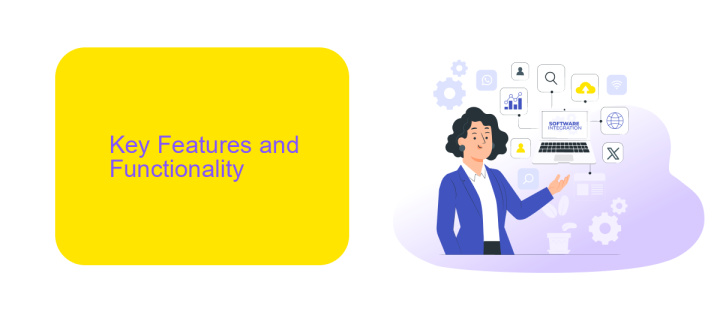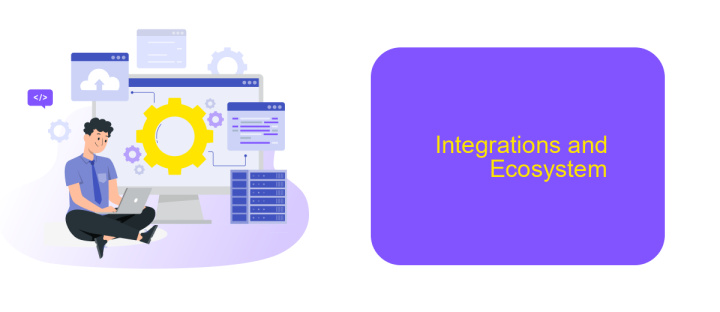Boomi Vs Mule
In the rapidly evolving landscape of integration platforms, businesses often find themselves choosing between leading solutions like Boomi and MuleSoft's Mule. Both platforms offer robust features for connecting applications, data, and devices, but which one is right for your organization? This article delves into a comparative analysis of Boomi and Mule, examining their strengths, weaknesses, and ideal use cases.
Introduction
In the ever-evolving landscape of enterprise integration, two prominent platforms stand out: Boomi and MuleSoft. Both are designed to streamline complex business processes, enhance connectivity, and improve overall efficiency. However, choosing the right integration platform can be challenging, given the unique features and capabilities each one offers.
- Boomi: Known for its user-friendly interface and robust cloud-native architecture.
- MuleSoft: Renowned for its comprehensive API management and extensive integration capabilities.
- ApiX-Drive: A versatile tool that simplifies the integration process, making it easier for businesses to connect various applications and automate workflows.
This article aims to provide a detailed comparison between Boomi and MuleSoft, highlighting their strengths and weaknesses. By examining key aspects such as ease of use, scalability, and integration options, we hope to guide you in making an informed decision for your business needs. Whether you are a small enterprise or a large corporation, understanding these platforms will help you optimize your integration strategy.
Key Features and Functionality

Boomi offers a unified platform with robust features for integration, API management, and workflow automation. Its drag-and-drop interface simplifies the integration process, allowing users to connect various applications and data sources with ease. Boomi also provides real-time data synchronization and comprehensive analytics, ensuring that businesses can monitor and optimize their processes effectively. Additionally, Boomi supports a wide range of connectors and pre-built templates, which significantly reduces the time required for deployment.
Mule, on the other hand, excels in providing a flexible and scalable integration solution through its Anypoint Platform. It offers extensive API management capabilities and supports a wide array of protocols and data formats. Mule's DataWeave language enhances data transformation and mapping, making it easier to handle complex integration scenarios. Moreover, Mule provides robust security features and advanced monitoring tools, ensuring that integrations are secure and performance is optimized. For businesses looking to streamline their integration processes, services like ApiX-Drive can further simplify the setup and management of integrations, providing additional ease of use and efficiency.
Pricing and Licensing

When it comes to pricing and licensing, both Boomi and MuleSoft offer flexible options tailored to different business needs. Boomi operates on a subscription-based model, providing various tiers based on the number of integrations and features required. This allows businesses to scale their usage and only pay for what they need, making it a cost-effective solution for startups and large enterprises alike.
- Boomi: Subscription-based, scalable pricing tiers
- MuleSoft: Subscription-based, with different editions and add-ons
MuleSoft, on the other hand, also follows a subscription model but offers different editions like Gold, Platinum, and Titanium, each with its own set of features and support levels. Additionally, both platforms integrate seamlessly with third-party services like ApiX-Drive, which helps simplify the integration process, saving time and resources. This flexibility in pricing and licensing makes it easier for businesses to choose a plan that fits their specific needs and budget.
Integrations and Ecosystem

Boomi and MuleSoft are powerful integration platforms, each offering unique capabilities for connecting applications and data across various environments. Boomi, known for its low-code approach, enables rapid integration development, making it accessible for users with varying technical expertise. MuleSoft, on the other hand, provides a robust framework with extensive customization options, suitable for complex enterprise-level integrations.
Both platforms support a wide range of connectors and pre-built templates, facilitating seamless integration with popular applications and services. Boomi's AtomSphere and MuleSoft's Anypoint Platform offer extensive ecosystems that cater to diverse integration needs, from on-premises systems to cloud-based applications.
- Boomi AtomSphere: Low-code integration, pre-built connectors, and templates.
- MuleSoft Anypoint Platform: Comprehensive API management, extensive customization, and enterprise-level scalability.
- ApiX-Drive: User-friendly interface, automated workflows, and integration with over 200 services.
Choosing between Boomi and MuleSoft depends on your specific integration requirements and technical expertise. For businesses seeking a straightforward, low-code solution, Boomi is an excellent choice. In contrast, MuleSoft is ideal for organizations needing advanced customization and scalability. Additionally, tools like ApiX-Drive can complement these platforms by providing easy-to-use automation and integration capabilities for various services.
Conclusion
When comparing Boomi and Mule, it's clear that both platforms offer robust integration capabilities, each with its own set of strengths. Boomi excels in ease of use and rapid deployment, making it an excellent choice for businesses looking for a user-friendly interface and quick setup. On the other hand, Mule provides extensive customization and flexibility, catering to more complex integration scenarios and larger enterprises with specific needs.
Ultimately, the choice between Boomi and Mule depends on your organization's specific requirements and technical expertise. For those who seek an even more streamlined integration process, leveraging services like ApiX-Drive can further simplify the setup and management of integrations. ApiX-Drive offers an intuitive platform to connect various applications and automate workflows, enhancing the efficiency of both Boomi and Mule implementations. By carefully evaluating your needs and considering additional tools like ApiX-Drive, you can make an informed decision that best supports your business objectives.


FAQ
What are the primary differences between Boomi and MuleSoft?
Which platform is more suitable for small to medium-sized businesses?
How do Boomi and MuleSoft handle API management?
What are the cost considerations when choosing between Boomi and MuleSoft?
Can I use third-party services to help with the implementation of Boomi or MuleSoft?
Apix-Drive is a universal tool that will quickly streamline any workflow, freeing you from routine and possible financial losses. Try ApiX-Drive in action and see how useful it is for you personally. In the meantime, when you are setting up connections between systems, think about where you are investing your free time, because now you will have much more of it.

